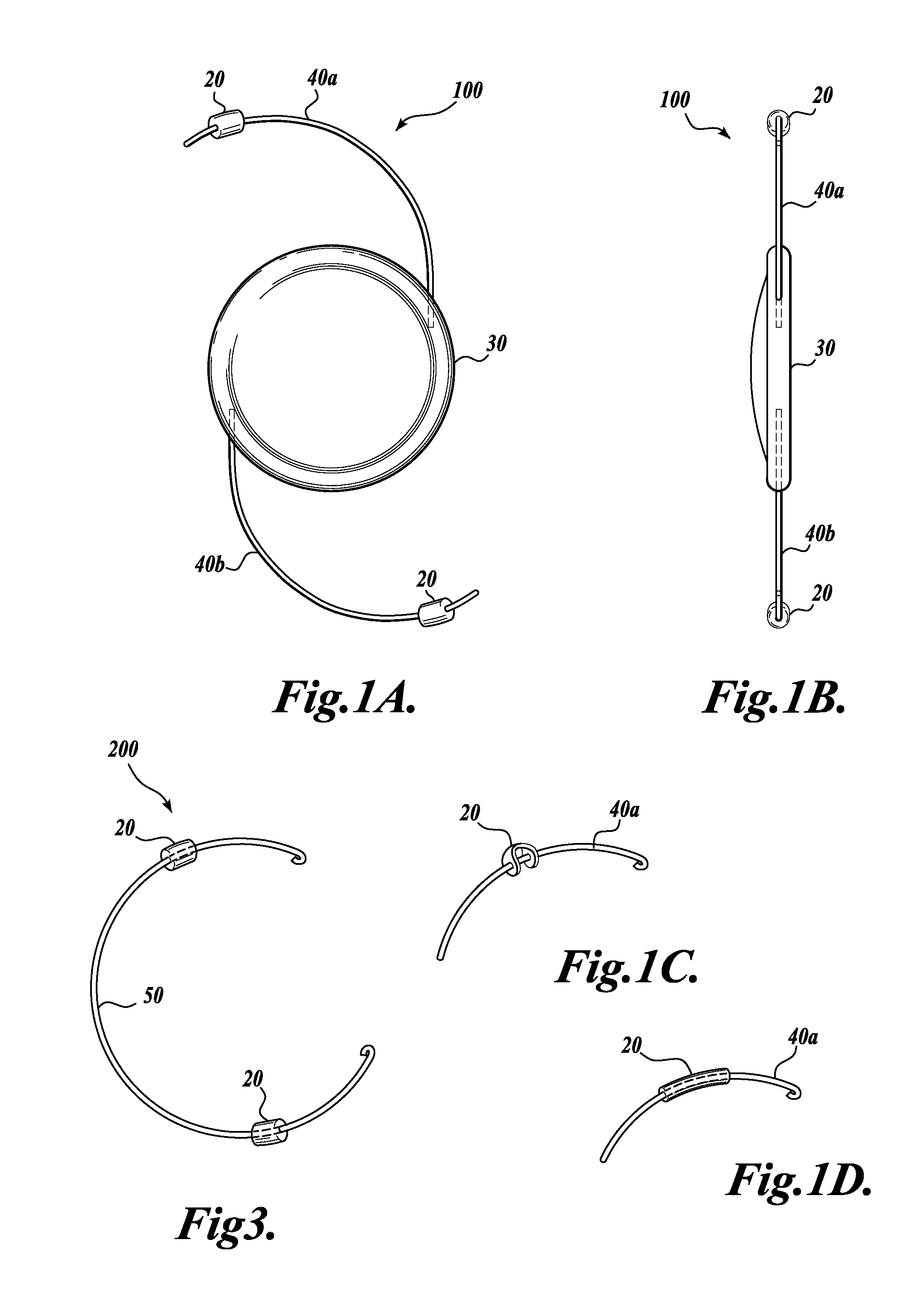Device and method for intraocular drug delivery
a technology for intraocular drugs and devices, applied in the field of local therapies for the eye, can solve the problems of poor patient compliance, and a large dose of expensive antibiotics
- Summary
- Abstract
- Description
- Claims
- Application Information
AI Technical Summary
Benefits of technology
Problems solved by technology
Method used
Image
Examples
example 1
Materials and Methods
[0109]2-Hydroxyethyl methacrylate (HEMA, No. 04675) monomer with a purity of more than 99.5% and tetraethylene glycol dimethacrylate (TEGDMA, No. 02654) were purchased from Polysciences Inc., Warrington, Pa. Ethylene glycol (No. 32,455-8), sodium metabisulfite (No. 16,151-9), ammonium persulfate (No. 24,861-4), anhydrous tetrahydrofuran (THF, No. 40,175-7), dodecyl isocyanate (C18 isocyanate), and dibutyltin dilaurate (No. 38,906-4) were received from Aldrich, Inc. All chemicals were used as received. Glass plates and glass apparatus for synthesis were soaked in 2% RBS-35 detergent (No. 27950, Pierce) overnight and rinsed with Millipore purified water prior to the experiments.
[0110]Preparation of a Polymeric Substrate (Poly(HEMA))
[0111]Crosslinked hydrogel slabs were synthesized from HEMA. Briefly, 0.5 g of 2-HEMA monomer and 0.2 g of the TEGDMA crosslinking agent were added to a mixed solution of norfloxacin and water / ethylene glycol (1 g / 1.5 g) with 1 mL of 15...
example 2
The Preparation and Characterization of a Representative Drug Delivery Construct: Octadecyl Isocyanate Surface Layer Formed on a Poly(HEMA) Substrate
[0118]As illustrated schematically in FIG. 5, surface hydroxyl groups on the poly(HEMA) were, in a concerted fashion, catalyzed to form urethane bonds with the available isocyanate groups on octadecyl isocyanate as these alkyl compounds self-assembled on the surface of the hydrogel to form surface layer.
[0119]XPS and TOF-SIMS Analysis
[0120]A typical C (1 s) XPS Spectra (FIG. 7A) of C18 surface layer on poly(HEMA) substrate with different reaction times at 60° C. showed an increase of the CHx (methylene) and the disappearance of C—OH / CO peaks which is indicative that hydroxyl groups in poly(HEMA) are reacting with the isocyanate. Further evidence for the desired reaction was the broadening of the O—C═O peak (compared to the control reaction containing C18 isocyanate but no catalyst), presumably due to its conversion into the urethane bon...
example 3
The Controlled Release of Norfloxacin From a Representative Drug Delivery Construct
[0124]C18-methylene chains were coated onto norfloxacin-containing poly(HEMA) for various times (5, 15, 30, and 60 minutes). Initially, it was important to assess the release of norfloxacin from the C18-coated poly(HEMA) in the absence of ultrasound. The data depicted in FIG. 8 demonstrate that, when placed in an aqueous environment, C18-layer has a much lower release rate into the medium, compared to that observed for the uncoated poly(HEMA) control. Furthermore, the initial burst release of the antibiotic was eliminated by the C18-layer. As suggested from the XPS and TOF-SIMS analysis, the progress of the reaction was also confirmed in this experiment. There is little difference in the release of norfloxacin in the material from a 5 minutes reaction vs. the uncoated poly(HEMA), while complete control of antibiotic release is apparent after 30 minutes of reaction time.
PUM
| Property | Measurement | Unit |
|---|---|---|
| Volume | aaaaa | aaaaa |
| Volume | aaaaa | aaaaa |
| Volume | aaaaa | aaaaa |
Abstract
Description
Claims
Application Information
 Login to View More
Login to View More - R&D
- Intellectual Property
- Life Sciences
- Materials
- Tech Scout
- Unparalleled Data Quality
- Higher Quality Content
- 60% Fewer Hallucinations
Browse by: Latest US Patents, China's latest patents, Technical Efficacy Thesaurus, Application Domain, Technology Topic, Popular Technical Reports.
© 2025 PatSnap. All rights reserved.Legal|Privacy policy|Modern Slavery Act Transparency Statement|Sitemap|About US| Contact US: help@patsnap.com



